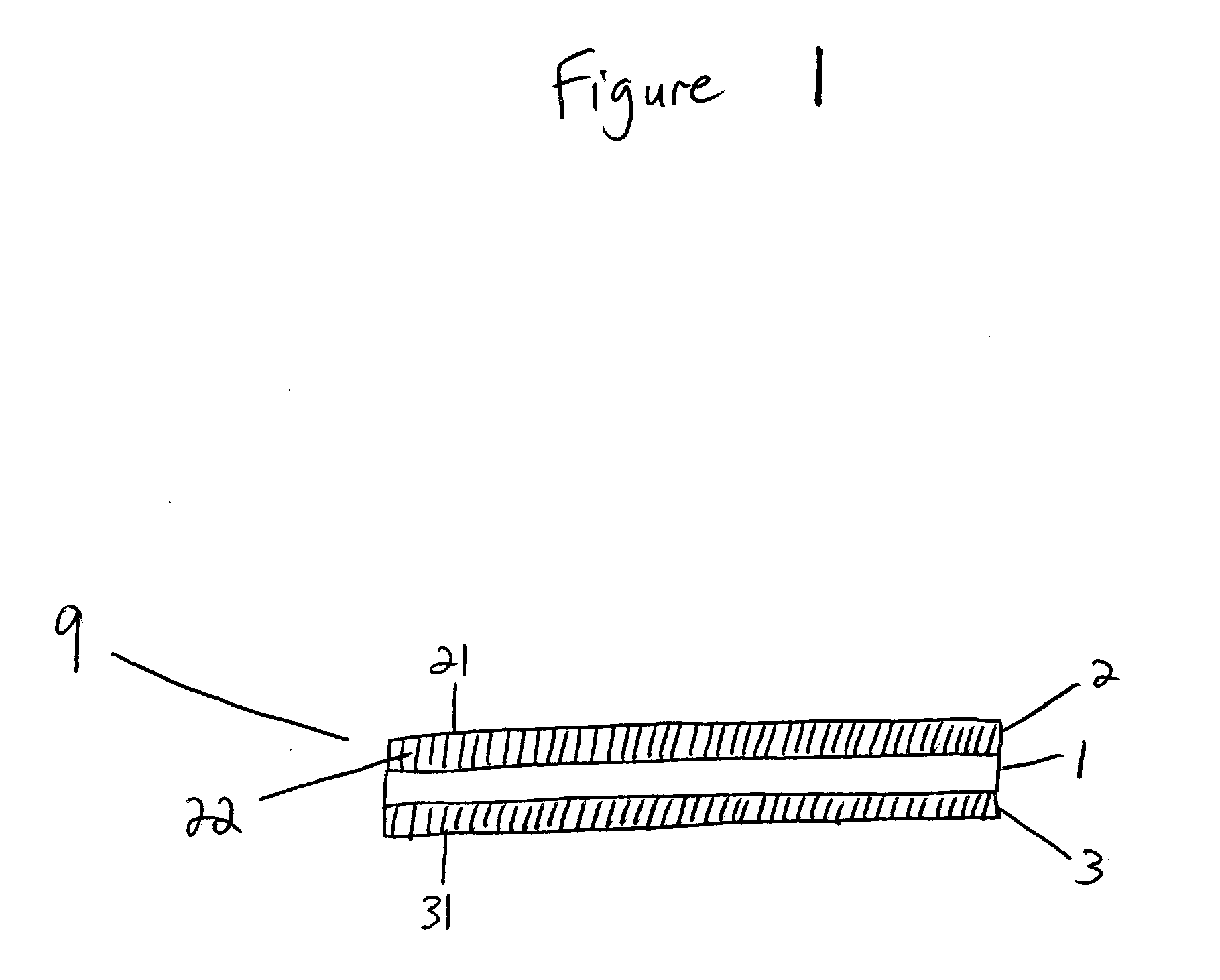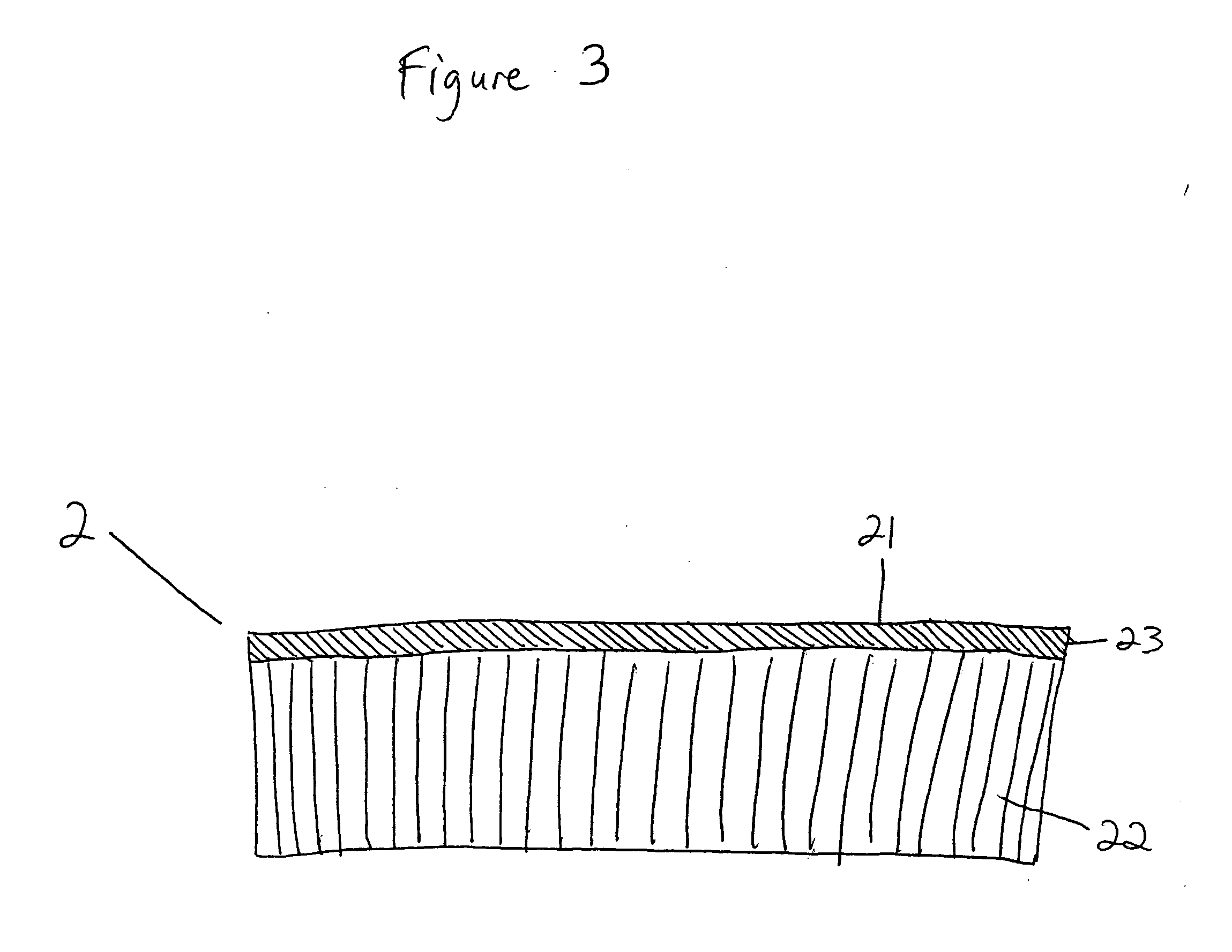Electrochemical fuel cell component materials and methods of bonding electrochemical fuel cell components
a fuel cell and component technology, applied in the field of electrochemical fuel cells, can solve the problems of high price and subject to breakage, heavy weight of bipolar separator plates, and inability to meet the requirements of use,
- Summary
- Abstract
- Description
- Claims
- Application Information
AI Technical Summary
Problems solved by technology
Method used
Image
Examples
Embodiment Construction
[0035] The present invention will now be described with reference to the illustrative embodiments in the following processes.
[0036] The present invention relates to a class of materials suitable for use as the porous flow fields in a bipolar separator plate, and to a method of producing such porous flow field materials. The present invention further relates to methods of producing a bipolar separator plate employing these porous flow field materials as components thereof, and to such bipolar separator plates which may then be incorporated into, for example, a PEMFC or a SOFC.
[0037] One embodiment of the invention relates to a method of producing a porous flow field material for a bipolar separator plate. First, at least two layers of wire mesh are positioned in a stacked arrangement. That is, the at least two layers of wire mesh are arranged one upon another to form a stack. The wire meshes for use in the invention include any wire meshes known in the art, such as for example, wov...
PUM
| Property | Measurement | Unit |
|---|---|---|
| thick | aaaaa | aaaaa |
| diameter | aaaaa | aaaaa |
| electrically conductive | aaaaa | aaaaa |
Abstract
Description
Claims
Application Information
 Login to View More
Login to View More - R&D
- Intellectual Property
- Life Sciences
- Materials
- Tech Scout
- Unparalleled Data Quality
- Higher Quality Content
- 60% Fewer Hallucinations
Browse by: Latest US Patents, China's latest patents, Technical Efficacy Thesaurus, Application Domain, Technology Topic, Popular Technical Reports.
© 2025 PatSnap. All rights reserved.Legal|Privacy policy|Modern Slavery Act Transparency Statement|Sitemap|About US| Contact US: help@patsnap.com



